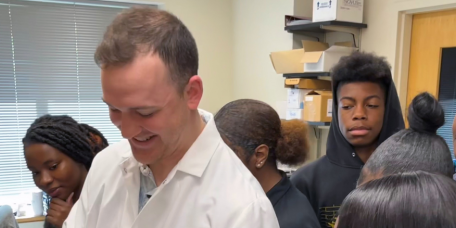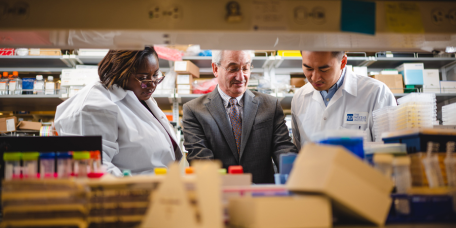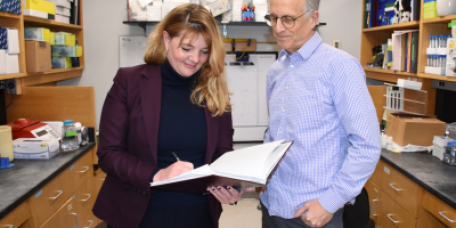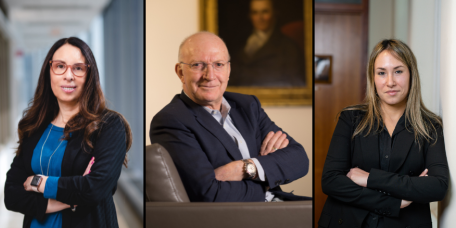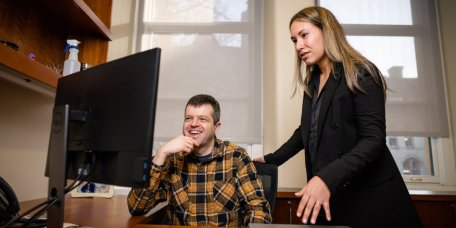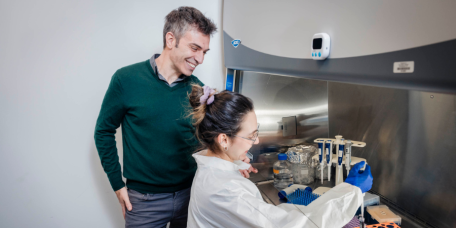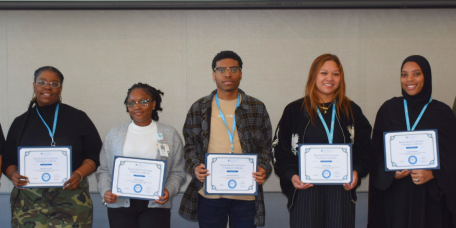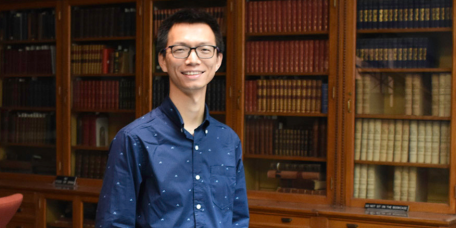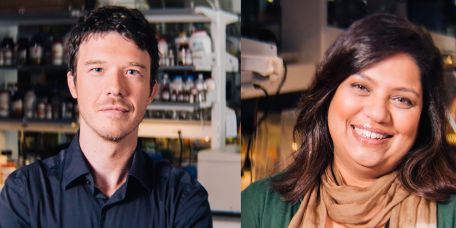The Wistar Institute
Research in the Classroom: Wistar and Collaborators Enhance Experiential Learning in The Life Science Classrooms of G.W. Carver High School
[pictured: George Washington Carver High School students observe Wistar’s Andrew Milcarek, Ph.D. in the lab] Philadelphia’s George Washington Carver High School of Engineering and Science is a criteria-based admission school that enrolls stude…
Wistar Scientists Develop Novel Antibody Treatment for Kidney Cancer
PHILADELPHIA — (June 04, 2024) — Advanced clear cell renal cell carcinoma (ccRCC) is a deadly form of kidney cancer with few treatment options; even with new immunotherapies, only around one in 10 patients ultimately survive.
Wistar Research Identifies Mechanisms for Selective Multiple Sclerosis Treatment Strategy
PHILADELPHIA — (May 28, 2024) — The Wistar Institute’s Paul M. Lieberman, Ph.D., and lab team led by senior staff scientist and first author, Samantha Soldan, Ph.D., have demonstrated how B cells infected with the Epstein-Barr virus (EBV) can contri…
Wistar Melanoma Researchers Discuss Risks and Solutions for Melanoma Awareness Month
Three of The Wistar Institute’s foremost melanoma researchers: professor Meenhard Herlyn, D.V.M., D.Sc.; associate professor Jessie Villanueva, Ph.D.; and assistant professor Noam Auslander, Ph.D. discussed the progress and potential in melanoma res…
Revealing Biology’s Hidden Patterns: Wistar’s Dr. Noam Auslander on the Power and Potential of Machine Learning
Dr. Noam Auslander, Ph.D., is assistant professor of the Molecular and Cellular Oncogenesis Program at the Ellen and Ronald Caplan Cancer Center. She focuses on developing machine learning methods to understand the factors driving cancer development…
Wistar Scientists Discover New Immunosuppressive Mechanism in Brain Cancer
PHILADELPHIA — (May 3, 2024) — The Wistar Institute assistant professor Filippo Veglia, Ph.D., and team, have discovered a key mechanism of how glioblastoma — a serious and often fatal brain cancer — suppresses the immune system so that the tumor ca…
The Wistar Institute and Collaborators Celebrate Two New Cohorts of Philly’s Life Science Workforce
University City, Philadelphia may have been quieter than usual with so many taking spring breaks, but March was a busy month for The Wistar Institute’s Hubert J.P. Schoemaker Education and Training Center: not one but two cohorts of the Institute’s…
Promising Personalized Approach to Liver Cancer Therapy Made Possible by DNA-based Neoantigen Research Designed at The Wistar Institute
PHILADELPHIA — (Tuesday, April 30, 2024) — Hepatocellular carcinoma (HCC), or liver cancer, is an aggressive malignancy with limited treatment options. An immunologically cold cancer — meaning the tumors can effectively hide themselves from the immu…
“Immunology is a Battlefield”: Wistar’s Dr. Nan Zhang on Creativity and Curiosity in Science
Dr. Nan Zhang, Ph.D., is an Assistant Professor in the Immunology, Microenvironment and Metastasis Program at the Ellen and Ronald Caplan Cancer Center. He studies the role of immune cells called macrophages in tumor growth and metastasis in the abd…
Wistar Scientists Start New Conference on Foundational RNA Research
Back from hosting the first-ever Genome Regulation through RNA Conference in Cancun, Mexico, Wistar faculty members Alessandro Gardini, Ph.D., and Kavitha Sarma, Ph.D., give us the inside scoop on what it was like to host a scientific meeting from s…
